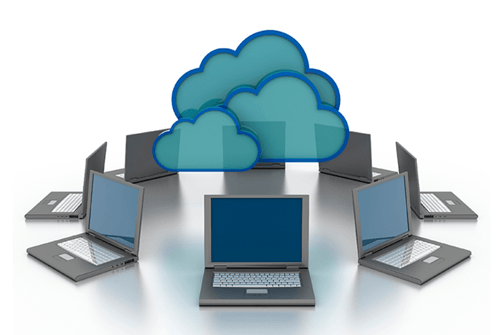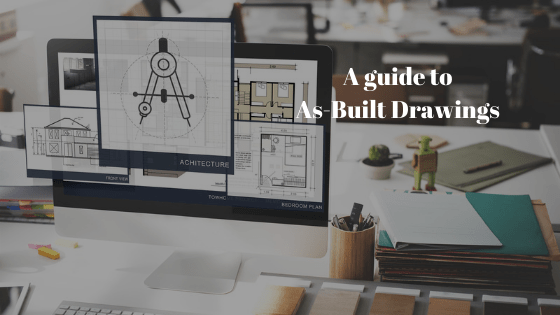With the advancement in technology, construction businesses now have many software options to choose from. This post focuses on evaluating the pros and cons of construction contractors using Cloud-hosted, construction Software-as-a-Service (“SaaS”) solution as compared with on-premises (“On-premise”) custom-built solution.

Cloud-hosted applications have quickly redefined modern productivity by providing remote access, automatic updates, mobility, scalability, cost saving and on-demand support. However, construction professionals looking for a construction management software often want to understand the benefits and the costs of available solutions.
In this article we’ll attempt to answer the question of whether you should consider the increasingly popular Cloud-hosted construction SaaS solution, or would you be better off with your own On-premise system.
Deployment
On-premise software, whether custom-built or a customised generic (not construction-specific) off-the-shelf project management software, is usually installed on the user company’s own servers and computers, located in the company’s premises. It requires users to purchase, manage and maintain the software and hardware themselves.
On the other hand, Cloud-hosted SaaS applications are normally run remotely on the vendor’s servers “in the cloud” and accessed by users via the Internet. This frees users from purchasing, managing and maintaining the software and hardware, as the SaaS provider supplies a package of software, data storage and support. This package is accessible anytime, anywhere and on all Internet-connected devices, such as the office desktop computer, laptops, tablets and mobile phones.
Mobility
As mobility becomes increasingly an important element of computing in the business world, most modern On-premise software solutions provide access to the system via Internet-connected mobile devices. Construction On-premise management solutions may also allow for access to project data and for collaboration among project stakeholders with varying degrees of complexity.
However, the difference with specialist construction SaaS solutions is that mobile access and online collaboration among project stakeholders are not treated as “good to have” add-on features. Online access to the latest project information and real-time collaboration among project stakeholders are considered essential ingredients in the design and architecture of the whole SaaS system. The objective is to ensure that access and collaboration are uncomplicated, secure and fully captured in the system’s audit trail in order to minimise errors and potential disputes.
Security
On-premise software allows the user company direct control over its data, software and hardware. It can apply whatever security measures it deems appropriate to protect the privacy of its data and the integrity of its system, and be responsible for the adequacy or otherwise of such measures.
Users of Cloud-hosted SaaS applications don’t have the same direct control over their data, because it is stored on the SaaS provider’s servers in the cloud. This aspect may be of concern to some users when they associate the degree of direct control with the adequacy of protection over the privacy and security of their data.
However, this concern is unjustifiable because Cloud-hosted SaaS providers are very much aware of the critical importance of privacy and security as an integral part of their service, and treat this aspect very seriously. They apply stringent professional protocols to protect the integrity of the system and to guard the privacy and security of their customers’ data. Such security protocols include the following (see also this article for more information):
- Using networking firewalls, high level encryption and sophisticated tools for detecting cyber crime and fraud.
- Programming codes that protect intellectual property and prevent an attacker from reverse engineering a proprietary program.
- Storing customers files in unique URLs inaccessible to the public and have strict access protocols.
- Data is backed up frequently, often instantaneously, in multiple locations to ensure that it is preserved and can easily be recovered.
- Maintaining PCI DSS compliance level to the highest payment security standards set by Visa and MasterCard.
- Independent testing of the entire site by penetration tests to verify the effectiveness of security policies and protocols.

Construction SaaS providers, in particular, understand the importance of guarding the privacy of their customers’ commercially-sensitive project information. They employ various procedures and controls to ensure that customers’ confidential information is protected, with special emphasis on those risks unique to the contracting industry. These procedures and controls include:
- Construction projects are set up with various levels of accessibility (e.g. no access, view only, view & edit, etc).
- Users must be added by the contractor to individual projects in order to access details of that project.
- Only authorised project team members have access to their project, not the whole company.
- Each client’s data is kept totally separate from the data of other clients.
- Sub-contractors cannot view or access the details of other Sub-contractors quoting on a project.
Private Cloud: It is worth noting that some construction SaaS providers allow their software to be installed on the client’s own servers in the client’s premises where all the data is protected behind a firewall. This hybrid solution provides an acceptable arrangement for contractors who want to use the SaaS provider’s software as an On-premise solution.
Cost Effectiveness
Another key difference is how the two options are priced. In general, providers of Cloud-hosted SaaS charge a monthly or annual subscription fee per user. This covers the right to use the SaaS solution, including a package of software, data storage and support. There is no upfront capital outlay and no charge for support, training and updates.
On-premise software generally involves one large upfront capital investment to cover the system’s development costs (or the perpetual license fee plus customisation cost for a generic off-the-shelf project management software). There are usually recurring costs for maintenance, support, training and updates of the software and the company’s own hardware.
Continuing Support
The SaaS subscription model includes regular licence support and professional services as part of the right to use the software. If the SaaS provider finds any flaws in the software, they will automatically be repaired free of charge and you will always access the latest trouble-free release of the software. The same goes for any remote guidance or advice that you may require.
However, software companies offering On-premise solutions tend to charge fees for regular licence support and professional services. You can opt-out of these extra services, but doing so will usually expose your business to the following risks:
- You won’t receive fixes for any bugs, including security vulnerabilities that are found in the software version you purchased.
- You normally would not get any updates to the software, or have to pay for them.
- You typically won’t be able to access help from customer service if you need guidance on a particular feature.
Network & Hardware Management
Construction software falls under the umbrella of what the IT community commonly refers to as ‘enterprise applications’, which are programs that have compute-heavy and storage-heavy requirements. To support these requirements, both head contractors and sub-contractors using On-premise deployment must have a robust hardware and network infrastructure.
Deploying your own On-premise custom-built solution means having a large number of hardware components that need to be purchased and managed over time. A study conducted by Sheryl Kingstone, an analyst at mobile research firm Yankee Group, found that the On-premise servers (i.e. part of the central computer) often required maintenance, backups and upgrades so that the programs could operate uninterrupted. This level of service typically is not included in the traditional On-premise licensing agreement.
SaaS solutions eliminate these expenses as the servers are provided and managed by the vendor. There’s no need to buy, install, configure, maintain and update servers, databases, and other components of the computing environment.
Scalability & Elasticity
Scalability is the ability to scale up or to scale down the level of computing facilities being used in order to accommodate unexpected changes in business volume, without sacrificing computing performance or cost.
Elasticity is how quickly a system can adapt to workload changes by increasing or decreasing computing resources in an on-demand manner, such that at each point in time the available resources match the current level of demand as closely as possible.
On-premise solutions are less scalable in the short term because they are usually built to meet a predetermined set of business workload levels. Any unexpected changes to the business volume can mean either the unavailability of necessary resources to meet an increased workload or having resources laying idle when there is an unexpected reduction in workload.
The scalability issue with On-premise solutions can of course be addressed in the longer term, but it is a time-consuming process (low elasticity) and would normally involve additional investment.
This problem doesn’t exist with Cloud-hosted services, which you can quickly scale up or down with a few clicks. This is because Cloud-hosted services such as SaaS offer users an unlimited computing and storage capacity, and only charge them for what they use at any one time. They also enable users to scale up or scale down instantaneously (high elasticity) in order to meet changed business requirements.
In effect, the Cloud-hosted SaaS providers deliver computational, storage, networking, database and other resources instantaneously and at the level needed by the business. Cloud services are therefore a perfect solution for businesses with fluctuating volumes of work, such as construction, because you use and pay only for the computing resources you need and use at any one time.

Updates
Deploying your own On-premise custom-built solution means having a large number of components that need to be tracked, maintained, updated, and re-integrated over time. This means that when you need to update the application servers or other components you may be exposed to the risk of complex reconfiguration to ensure that every component works perfectly with all other components.
The downside is that users may be inclined to avoid these complications by foregoing minor updates or delaying the implementation of critical updates, performance improvements or new features, and as a result fall behind competitors.
With SaaS solutions, your application will always be running on the latest updates and have the benefit of all new features introduced by the SaaS provider to meet the evolving needs of the construction industry. You also won’t waste time and incur the risk of doing it yourself because the SaaS experts constantly incorporate and test component updates before bringing them into the live online software.
With Cloud-based SaaS subscriptions, these major updates would not incur any additional fees or investment. In addition, you won’t have to reassess the capabilities of your computers, servers and network, as the SaaS provider would have already overhauled their own facilities where the construction management software resides.
Performance
A construction-specific SaaS solution from a top SaaS specialist provider is most likely to be a far better long-term solution than a custom-built On-premise solution or a customised generic off-the-shelf project management software. This is because construction-specific Cloud-based SaaS providers:
- are specialists whose core business is to build SaaS solutions for the construction industry.
- have the advantage of a large pool of both skilled SaaS development engineers and construction specialists.
- provide high-performance computing infrastructure that guarantees low network latency for applications.
- provide applications that are accessible from almost any internet-connected device, from virtually anywhere in the world.
- have access to the latest information and telecommunication technologies and trends.
- are up to date with the latest IT requirements of the construction industry as they deal with numerous construction clients on a daily basis.
- have economies of scale that enable them to update and enhance the quality and features of their software on a continuous basis.
These benefits of specialisation and scale mean that SaaS users get something that not only costs less but is also of far better long-term quality.
Timing
When you have to choose between developing your own custom-built On-premise system and using a construction-specific SaaS solution, you will need to consider how long it will take to have a fully functional system that meets all your business needs.
Apart from the upfront capital expenditure required to develop your own On-premise custom-built solution, it takes time to go through the process of defining requirements, design, planning, scoping, development, testing, delivery and user acceptance.
Of course, the complexity of the system being developed will determine the development time frame. However, the following factors can influence the project’s timeline:
- Change in requirements or design after the project has started.
- Delays or sub-standard performance caused by third-parties.
- Unavailability of specialist software development engineers skilled in particular disciplines.
- Unclear/incomplete requirements or imprecise system design.
- Conflicting directions from various stakeholders.
- Working with new or unproven technologies.
- Data migration.
Buying a generic (not construction-specific) off-the-shelf project management software and having it customised to meet the company’s needs may take less time to implement than developing your own custom-built system from scratch. The actual timeline will obviously depend on how much industry-specific modifications (because it is not built specifically for construction) and user-specific customisation need to be made to ensure that the system meets the business requirements of the client. A compromise is often required as there is only a limited practical amount of industry-specific modifications that can usually be made to generic off-the-shelf software.
On the other hand, a construction-specific SaaS solution provides a tried and proven “ready-to-use-now” system that requires no industry-specific modifications (because it is built specifically for construction), no or very minor user-specific customisation and you don’t need to purchase, install and configure hardware and software.
Risks
Developing own On-premise custom-built solution is not for the faint-hearted. You will be embarking on a project that has significant implications for the future of your business and will involve significant investment in money and time. The risks associated with such an undertaking include cost overruns, time delays, integration problems with current systems, failure to deliver all user requirements, changed user requirements during development time and causing business disruption if implemented prematurely.
Customising a generic (not construction-specific) off-the-shelf project management software may be somewhat less risky, provided that the required level of industry-specific modifications is economical and will not harm the integrity of the software, and that the software can be easily customised to meet the specific needs of users without compromise. It must also be flexible enough to meet the future evolving needs of the business with minor modifications. It must also be remembered that any such future modifications will, of course, involve additional cost.
A construction-specific SaaS solution presents the lowest level of risk. It provides a “tried and proven” specialist solution, built to meet the specific needs of the construction industry by specialists who understand the workings and needs of the industry intimately. And because it is construction-specific, it is enhanced and improved continuously by the specialist providers to keep it up-to-date with the evolving needs of the industry.
Conclusion
Cloud-hosted construction SaaS solutions offer several advantages over On-premise custom-built system or customising a generic (not construction-specific) off-the-shelf project management software. Cloud-hosted SaaS solutions compare favourably in respect of mobility, collaboration, cost, support, network and hardware management, scalability and elasticity, updates, performance, timing and risks.
Using advanced encryption techniques and other control protocols, Cloud-hosted SaaS providers deal successfully with the critical issue of data security by having built-in safeguards of the highest professional standards to protect the privacy and security of their customers’ data. Cloud-hosted construction-specific SaaS solutions offer a real-value alternative in terms of functionality and cost.






